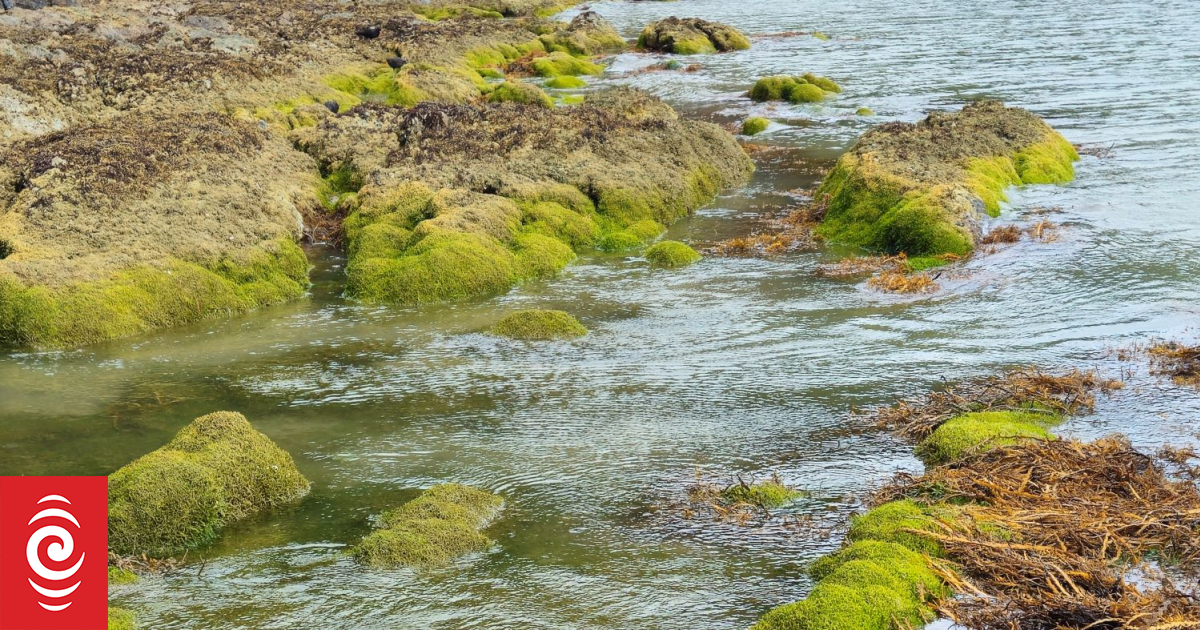
Caulerpa growing on rocks in the Bay of Islands.
Photo: Supplied / Rana Rewha
Northlanders are being warned the region faces some tough choices as biosecurity officials grapple with an ever-growing number of invasive pests.
Northland Regional Council is seeking early feedback about which new invaders should be added to its list of 143 pest plants and animals, and how it should best use its limited staff and funding to tackle them.
Biosecurity working party chairman Jack Craw said the council was considering new rules that would ban the sale of some turtles, lizards and parrots, as well as certain exotic palms.
The council was also looking at adding new species such as Madagascar ragwort, a fast-spreading pasture weed, and exotic caulerpa, an invasive seaweed, to its pest management plan.
Craw said the aim of the pest plan was to get the right management approaches in place for the many species classed as pests in Northland, and direct the right balance of funding to the right places.
“Resources are limited and some hard decisions will need to be made regarding which pests will be able to be managed. We’re really keen to hear people’s thoughts on what’s working well with the current pest plan, and what might need to change.”

Far North farmer Ian Sizer examines a clump of Madagascar ragwort, a toxic pasture invader the Northland Regional Council is considering adding to its pest management plan.
Photo: RNZ / Peter de Graaf
Craw said some pests posed a bigger threat than others, some pests were easier to manage than others, many pests were long-established in the north and a few had arrived only recently.
He said the council was investigating changes to the rules for turtles (red-eared slider turtle and the snake-neck turtle), lizards (bearded dragon and eastern water dragon) and parrots (galah, Indian ring-necked parakeet, rainbow lorikeet, and sulphur-crested cockatoo).
“These species are generally not established in the wild in Te Tai Tokerau, but if they were to escape or be released, the impact they would have in the environment could be huge. We’re considering whether banning these species from sale or breeding would help reduce that risk.”
Craw said the council was also investigating options for managing tench, a freshwater fish, and the Canada goose, species originally introduced for hunting and fishing.
The sale of bangalow and Chinese fan palms had already been banned in Auckland, and the council was considering doing the same in Northland because they outcompeted nikau palms when invading forest areas.

The freshwater gold clam (Corbicula fluminea).
Photo: Supplied/ NIWA
Craw said the current pest plan covered 143 animal, plant, freshwater and marine pests, as well as the microorganism that caused kauri dieback disease.
It also included a marine pathway plan to prevent marine pests from being transported to new places.
New species the council was still assessing and considering adding to the list were the toxic pasture invader Madagascar ragwort, fall armyworm, Australian winged weta (also known as king cricket), exotic caulerpa, a seaweed called red sea plume, the highly invasive freshwater gold clam, and the fungal disease myrtle rust.
Craw said formal submissions on the plan would open in March, but the council was holding early engagement with hapū, iwi, kaitiaki, pest control groups and other interested parties.
Comments on the pest plan could be shared via an online form at www.nrc.govt.nz/pestplan, by emailing pestplan@nrc.govt.nz or phoning 0800 002 004.
Sign up for Ngā Pitopito Kōrero, a daily newsletter curated by our editors and delivered straight to your inbox every weekday.



